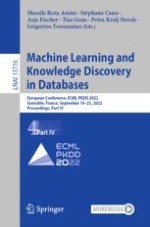2023 | OriginalPaper | Chapter
Deep Active Learning for Detection of Mercury’s Bow Shock and Magnetopause Crossings
Authors : Sahib Julka, Nikolas Kirschstein, Michael Granitzer, Alexander Lavrukhin, Ute Amerstorfer
Published in: Machine Learning and Knowledge Discovery in Databases
Publisher: Springer Nature Switzerland
Activate our intelligent search to find suitable subject content or patents.
Select sections of text to find matching patents with Artificial Intelligence. powered by
Select sections of text to find additional relevant content using AI-assisted search. powered by
